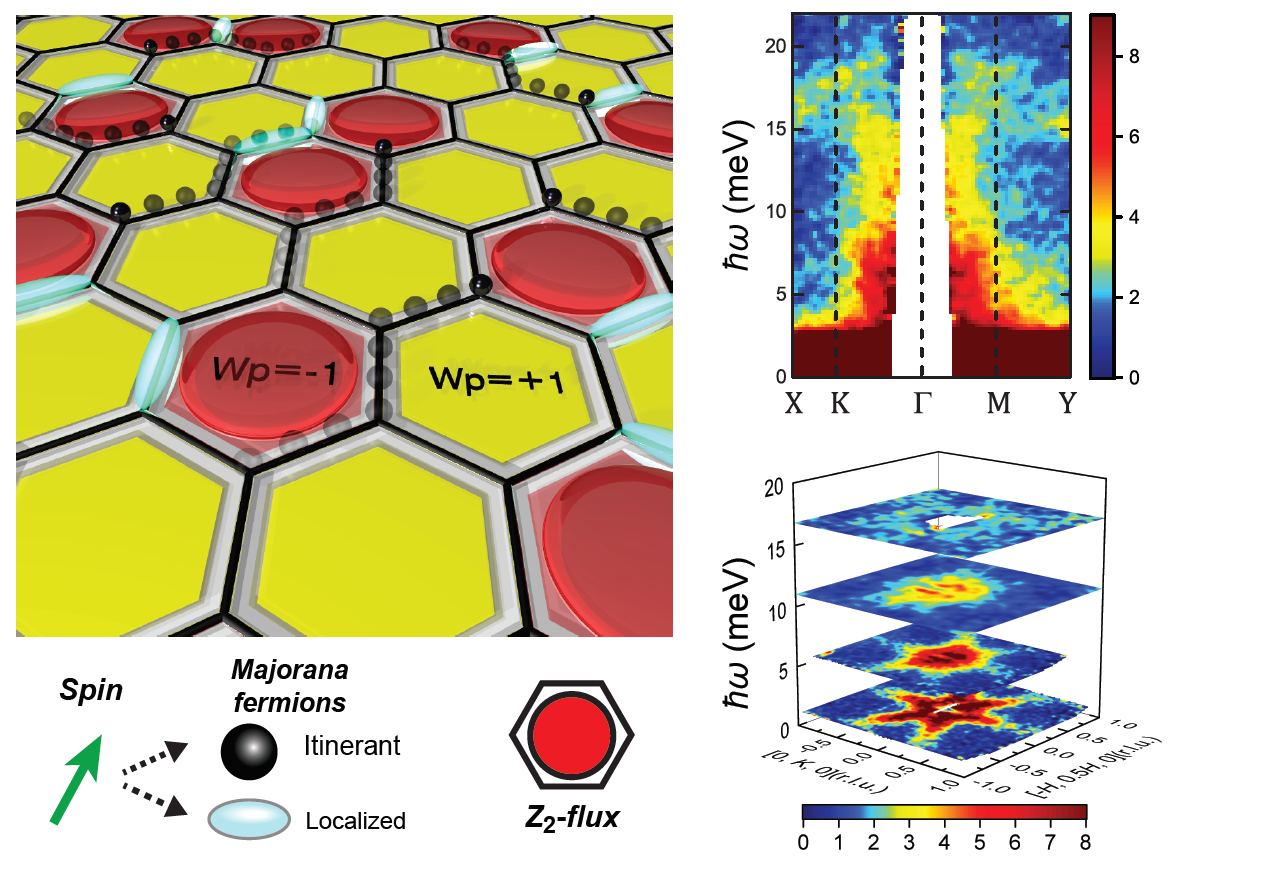Recent research at ISIS Neutron and Muon Source looking at the behaviour of bound Majorana particles in quantum spin liquids, has been published in Nature Physics , and the results will feed back into the theoretical physics community, but may also bring viable quantum computing a step closer.
Majorana fermions and quantum spin liquids
The existence of Majorana fermions was hypothesized by Ettore Majorana in 1937. Unlike Dirac fermions (e.g. electrons), which have associated antiparticles, Majorana fermions are their own antiparticles. Although they have yet to be discovered experimentally as elementary particles, bound Majorana fermions were detected as quasiparticle excitations in 2014.
Quantum spin liquids are an example of frustrated magnetism, where the magnetic moments in the material do not settle into an ordered pattern as the temperature approaches absolute zero, despite the fact that they interact strongly. For example, in some geometrically frustrated magnets, each spin wants to be anti-parallel to its neighbours, but the triangular arrangement of the spin locations makes this impossible. There is considerable interest in finding quantum spin liquids that can be described by the Kitaev spin model, a network of magnetic atoms on a honeycomb lattice in which Majorana fermions appear as excitations. The magnetic insulator α-RuCl3 is a promising candidate.

|
Left panel: Intermediate temperatures where low energy itinerant Majorana fermions (black balls) and higher energy
localised Majorana fermions (cyan ovals) co-exist. Right panel: Inelastic neutron data from MERLIN (Top) and LET (Bottom) at this temperature showing the magnetic excitations associated with the Majorana fermions.
|
LET there be neutrons
Inelastic neutron scattering is the perfect tool for probing magnetism, and ISIS ' LET instrument is a cold neutron multi-chopper spectrometer, designed for the study of dynamics in condensed matter. According to Dr David Voneshen , co-author of the paper, about 80% of the experiments carried out on LET are in fundamental magnetism, but it is also used for applied science, e.g. in the areas of pharmacology and battery research.
For these experiments the researchers created a single large crystal of α-RuCl3, by aligning 150 high-quality individual crystals, created by a vacuum sublimation method. The crystal was mounted in a liquid helium cryostat, making it possible to control temperature from 1.5 K to 270 K. Bombarding neutrons are able to excite motions of the magnetic moments inside the crystal, losing energy as a result, and it is these changes in energy that are detected and processed to give us an understanding of what it happening inside the crystal.
The results showed two distinct Majorana fermions, as predicted in the Kitaev model. The high- and low-temperature structures are consistent with the excitations of itinerant and localized Majorana fermions, respectively. The experimental results corresponded surprisingly well with the model, although there was not 100% agreement.
Qubits and quantum computing
Dr Voneshen says the next step for this research is to examine the behaviour of the Majorana fermions inside a magnetic field. There will also be a need for the theoretical physics community to examine the differences between the Kitaev model and these experiment results.
Majorana fermions are of more than theoretical interest, however. It's thought that they will make stable qubits for quantum computing. Analogous to the bits used by conventional computers, qubits make use of quantum entanglement to process certain kinds of tasks much more quickly. The kind of brute force methods used for code breaking, for example, would be much quicker using a quantum computer, and a desktop quantum computer would be capable of processing all of the data from the LHC, removing the need for CERN's grid computing system. On the other hand, a quantum computer would make for a very slow internet browser!
Further information
Read the full article Seung-Hwan Do et al. "Majorana fermions in the Kitaev quantum spin system α-RuCl3 " Nature Physics 13,1079–1084 (2017) doi:10.1038/nphys4264
See here for more information on the instruments MERLIN or LET or contact Dr David Voneshen.
